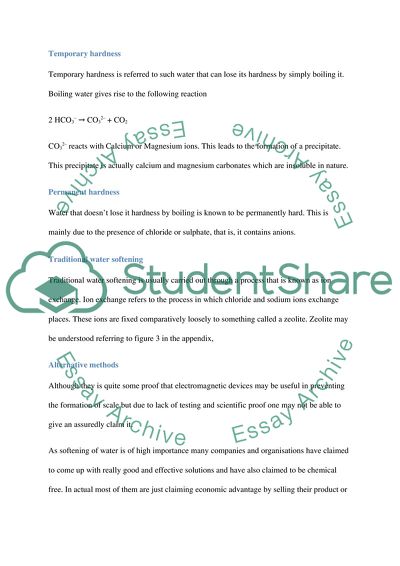Hard water in Chemistry Assignment Example | Topics and Well Written Essays - 1500 words. Retrieved from https://studentshare.org/chemistry/1621658-assignment-1-chemistry-principles
Hard Water in Chemistry Assignment Example | Topics and Well Written Essays - 1500 Words. https://studentshare.org/chemistry/1621658-assignment-1-chemistry-principles.


